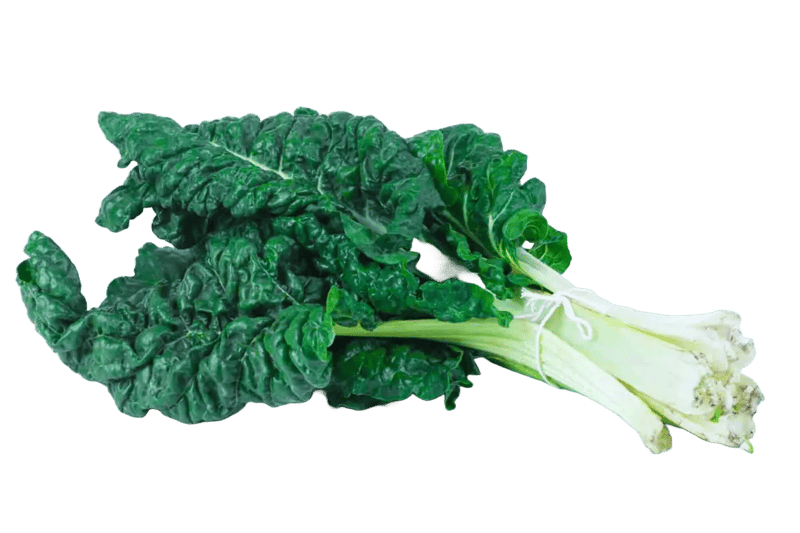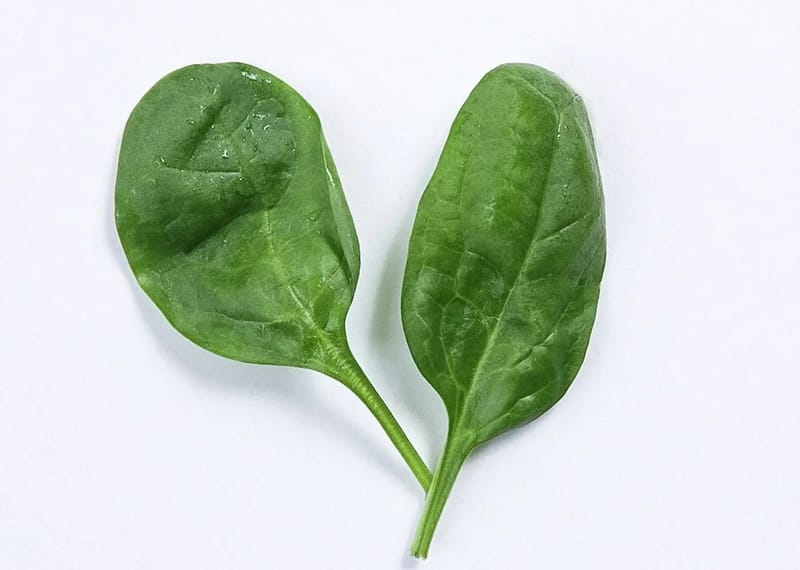What Kenyans Call "Spinach" Is Actually Swiss Chard: Nutrition Facts
Most Kenyans unknowingly buy Swiss chard when they ask for spinach. Learn the nutritional differences between these two leafy greens and why it matters for fitness tracking.
Most Kenyans unknowingly buy Swiss chard when they ask for spinach. Learn the nutritional differences between these two leafy greens and why it matters for fitness tracking.

Photo: Fit Savanna
Just like we previously explained in our Nduma vs Arrowroot article, where most Kenyans use arrowroot to mean taro, there's another mislabeled vegetable in our markets: spinach.
In Kenya, what most people buy as "spinach" (pictured below) is actually Swiss chard (Beta vulgaris var. cicla).

Swiss chard is part of the Beta family, which includes beetroot and sugar beet.
In fact, Swiss chard is technically a beet that has been cultivated to produce larger leaves rather than large bulbous roots.
In some regions, Swiss chard can have red stems, but locally they usually have white stems, as shown in the previous picture.
True spinach is a different genus, Spinacia (see the picture below).

As you can see, actual spinach has smaller, softer leaves that cook faster and have a more earthy taste.
It's rarely found in local open-air markets, though supermarkets may stock it occasionally.

Food mix-ups can be a big deal for fitness enthusiasts. If you search and log "spinach" in your fitness app when you've actually eaten Swiss chard, your nutrient tracking will be off.
These two greens differ significantly in their vitamin, mineral, and even calorie content.
Below is a nutrition comparison per 100 grams serving, boiled & drained:
Scrollable to the right for full details
| Nutrient | Swiss Chard (per 100g, with salt) | Spinach (per 100g) |
|---|---|---|
| Energy (kcal) | 20 | 23 |
| Protein (g) | 1.88 | 2.97 |
| Total Fat (g) | 0.08 | 0.26 |
| Carbohydrate (g) | 4.13 | 3.75 |
| Sugars (g) | 1.10 | 0.43 |
| Fiber (g) | 2.10 | 2.40 |
| Calcium (mg) | 58 | 136 |
| Iron (mg) | 2.26 | 3.57 |
| Magnesium (mg) | 86 | 87 |
| Phosphorus (mg) | 33 | 56 |
| Potassium (mg) | 549 | 466 |
| Sodium (mg) | 415 | 70 |
| Zinc (mg) | 0.33 | 0.76 |
| Copper (mg) | 0.17 | 0.17 |
| Manganese (mg) | 0.33 | 0.93 |
| Selenium (mcg) | 0.90 | 1.50 |
| Vitamin A (IU) | 6,124 | 10,481 |
| Beta-carotene (mcg) | 3,652 | 6,288 |
| Vitamin E (mg) | 1.89 | 2.08 |
| Lutein + zeaxanthin (mcg) | 11,015 | 11,308 |
| Vitamin C (mg) | 18 | 9.8 |
| Thiamin (mg) | 0.03 | 0.09 |
| Riboflavin (mg) | 0.09 | 0.23 |
| Niacin (mg) | 0.36 | 0.49 |
| Pantothenic acid (mg) | 0.17 | 0.14 |
| Vitamin B-6 (mg) | 0.09 | 0.24 |
| Folate (mcg) | 9 | 146 |
| Vitamin K (mcg) | 327 | 494 |
| Cholesterol (mg) | 0 | 0 |
Sources: University of Rochester Medical Center - Swiss Chard; University of Rochester Medical Center - Spinach
When starting your fitness journey, knowing what's truly on your plate can make a big difference.
Understanding the real names and nutritional profiles of common foods helps you track your macronutrients (carbs, proteins, fats) and micronutrients (vitamins, minerals) accurately.
However, much of the nutrition information available online comes from foreign databases such as the U.S. Department of Agriculture (USDA).
While these databases are accurate, the names used there often differ from the local names Kenyans use. This mismatch can easily cause confusion when logging foods into trackers like MyFitnessPal or Cronometer.
While changing how we label foods may feel unnecessary, building awareness of these differences matters, especially for anyone serious about nutrition tracking, fitness goals, or medical diets.
So next time you log your meal, remember:
What Kenyans call spinach is almost always Swiss chard.
Knowing that small fact could make your entire nutrition plan more effective.
Proofreading by Grace Njoroge, copy editor at Fit Savanna.
Continue reading with these related fitness and health articles




Join the conversation!
Share your thoughts on "What Kenyans Call "Spinach" Is Actually Swiss Chard: Nutrition Facts" below.